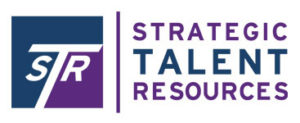Inside Look Into Glassdoor
/in STR Blog /by Kim KleemanHave you heard of Glassdoor? If you answered no, you would be in the majority. I was baffled to find out that in a group of peers when quickly surveyed, more than half had no idea what Glassdoor even was. You NEED to know what this is and I am here to help!
Glassdoor is a website where that was created so employees can post about their experiences with things like compensation, culture, management, etc. and YOUR Company. Go ahead, check it out: https://www.glassdoor.com/index.htm (click on Companies and Reviews to start your search).
As you can see, they can post anonymously and can even provide direct comments regarding your organization (which are viewable to ALL). Let’s just call it the Yelp for offices and instead of customer comments, you have employee/former employee comments/evaluations and “grades” for your company, overall.
To have a website like Glassdoor out there COULD be problematic to some, and beneficial to others. To companies that have culture and employee satisfaction figured out, Glassdoor isn’t a four-letter word to you. To others, poor employee reviews on Glassdoor could be detrimental to your organization for several reasons:
Cautiously advising other candidates not to apply within – thus creating a cycle of hiring “secondary talent” by settling for candidates that aren’t the best match (skill-wise, professionally, etc.) simply because no one else has interest/has applied.
Broadcasting to your competition how to poach your most valued employees – your competition can see why disgruntled employees left your organization and use that as leverage to poach your top talent right out from under your feet.
Advertising to your existing clientele that you may be having “problems internally” – fostering a sense of internal turmoil could prevent your clients to continue to do business with you and/or prevent NEW prospects to go to another organization where the employees are less focused on internal turmoil and more focused on the end product/results.
Alright, so you know there is this site out there, so how do you protect yourself from current and future defamatory posts/comments about your Company? There are several unethical ways of changing your score (much like a business owner would do with a bad Yelp review) but ultimately everyone knows it was out there, and you do too – so why not work on a plan to make the changes necessary to ensure a positive employee experience during their tenure with your Company? Working with HR Professionals that are focused on best practices and company culture are great first steps in “getting to work”. It may seem like you have to make some giant leaps, but if you’re working with the right HR team, they can guide you through some small strides that can make a big difference quickly. You’ve got this!
Costly Mistake: Losing a Key Player
/in STR Blog /by Kim KleemanAs CEOs and executive leaders, we all know our strengths/weaknesses. It is our goal to hire talent that rounds out and compliments those strengths/weaknesses. As your organization grows, if your recruitment department/recruiter is doing their job well, you’ll have a variety of strengths and weaknesses that complement each other and reinforce the culture of your organization. It is then that you need to ensure that employees within the same department and/or with comparable skill-sets are cross-trained. That way, you’re not caught with your pants down – in a desperate situation where you’ve lost a key player and have no one internally who can perform the same job duties until a new hire is made.
Per the Dictionary: “The key players in a particular organization, event, or situation are the most important people or things involved in it.” I couldn’t agree more! Now, what is one of your key players leaves? How do you determine the cost of losing such a player? Well, that all depends on how well you have prepared.
Cross training is smart business.
As the cost to you losing a key player, if you have prepared, will be significantly less detrimental to your pocketbook and to your organization’s day-to-day activities. Don’t have your people cross-trained? No need to panic! Take action. Get started right away – don’t delay! Here’s how you can get started:
1) Have your key player make a manual in case of absence. This should include relevant company passwords, login credentials, and any intricate details pertaining to their day-to-day duties.
2) Have the person directly below your key player (in title) sit with your key player for a week. Have them take notes on anything additional (beyond the manual already created) that are pertinent to that particular role.
3) Have your key player update their manual using the notes from the person they cross-trained. Make sure they update weekly to ensure the manual stays up to date.
Hire without time constraints
Hiring out of desperation, is risky because you are increasing the possibility of needing to spend resources on filling the need again in the near future. Rather, if you focused the resources and time on the front-end in ensuring key talent was cross-trained and ensuring you’re working with a Recruiting Firm/Recruiter whose focus is on the right fit and not the right now fit. Strong onboarding processes improve new-hire retention by 82 percent and productivity by over 70 percent, according to Brandon Hall Group research. Additionally, the research shows that companies with weak onboarding programs are more likely to lose these people in the first year.
Making hiring decisions out of desperation is never somewhere you want to be. First, you might not be hiring the best talent for the role. Instead, the focus is on patching the hole. Second, candidates can sense desperation and that raises concern about the stability of your organization or of your decision-making skills.In those moments, the mentality is “just find me someone who can do this” rather than “find me the RIGHT someone who can do this and fit the culture of our organization”.
Hiring quickly versus hiring the most qualified is risky because you are increasing the possibility of needing to spend resources on filling the need again in the near future. Rather, if you focused the resources and time on the front-end in ensuring key talent was cross-trained and ensuring you’re working with a knowledgeable Recruiting Firm/Recruiter whose focus is on the right fit and not the right now fit, you’re setting yourself up for success.
Growth Mode vs. Sustainability Mode
/in STR Blog /by Kim KleemanAre you in Growth Mode? Or, are you in Sustainability Mode? Where to go from here?
Q1 of this year, I heard a lot of buzz about many of my clients being in growth mode. To be honest, this is nothing new to me as it seems as though growth mode is discussed more freely during that first quarter. Why? New budgets, new year, new outlook, new attitudes – mostly.
Let’s say you’re at or above your forecast for the year, now what? Now is when you should be doubling down on hiring new talent. Why not explore the possibly expanding new avenues of business? That, of course, requires finding the right talent to support the growth of your company. Talent that is invested and in it for the long-run. What better time than during growth mode to focus on what you want and to try and go after it? Go for it!
Come Q4, most of my clients are in sustainability mode – they’ve got key talent in place, and are waiting for forecasts to come to fruition, and budgets to be freed-up. However, there are some who must lay-off employees for one reason or another. Often, my clients think that we cannot assist them with this side of things. However, during this transition, there is no better assistance to provide the employee than an outplacement assistance resource.
Outplacement assistance is a way for your former employee to get their resume ready, dust off their interviewing skills, and receive expert guidance along the way. Most medium to large organizations offer outplacement stipends to their employees when they are being laid-off. The reason for this is is two-fold. First, it helps those employees who were loyal to them by accelerating their job search and providing tools to be successful. Second, it also helps the organization with unemployment claims as a well-prepared candidate with a targeted search will leaps and bounds be more successful than a candidate who is not.
Picking Talent to Last: The Difference Between a Staffing Agency Vs. Talent Acquisition Firm
/in STR Blog /by Kim KleemanThe number one question we get from prospective clients is: How are you different than a staffing agency? The truth is, we differ significantly. However, to understand what we do, one first must understand what staffing agencies do
Welcome to our Blog!
/1 Comment/in STR Blog /by adminStrategic Talent Resources (STR) is happy to debut our new website and company blog. We hope you’ll find this resource helpful. Read more →



